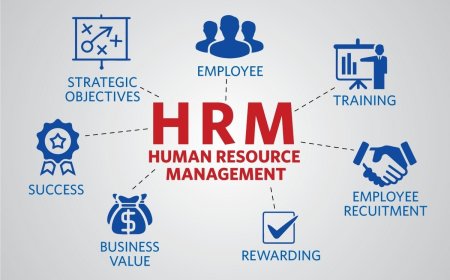Training and types of Training

INTRODUCTION:
In this competitive world, organizations are investing significant resources in training and developing their employees. Every company has a dedicated Training and Development cell to enhance employee skills and knowledge. Training is crucial as it helps employees stay updated on work-related trends, techniques, procedures, and technologies. Organizations may hire trainers or outsource their training activities. In this article, we'll explore the details of training, its importance, benefits, objectives, structuring effective programs, the distinction between training and education, and finally, delve into different types of training with examples.
WHAT IS TRAINING?:
Training is a fundamental concept in human resource development. It involves developing specific skills to a desired standard through instruction and practice. It empowers employees to perform their jobs correctly, efficiently, and with commitment. Training entails increasing the knowledge and skills of an employee for a particular job.
Dale S. Beach defines training as "the organized procedure by which people can learn knowledge and/or skill for a definite purpose." Training encompasses teaching and learning activities aimed at helping organization members acquire and apply the knowledge, skills, abilities, and attitudes needed for a specific job and organization. The training process shapes employees' thinking and contributes to their high-quality performance. It's a continuous, ongoing process that includes coaching, mentoring, formal education, and self-directed experiential learning.
A corporate training program is tailored to address a company's specific needs and its employees. The objectives of such a program can vary, from developing new skills in employees to improving communication or boosting productivity. The timeframe and methods for measuring success may differ for each company. Success could be measured by factors like increased sales, improved customer satisfaction, enhanced employee morale, or higher retention rates. Noteworthy statistics in the corporate training landscape include:
-
In a survey of 4,300 workers, 74% felt they weren't realizing their full potential at work due to a lack of training.
-
56% of HR managers believe that training and development are key to business improvement.
-
Only 12% of learners reported applying the skills from training to their job.
-
At the management level, 38% believe learning programs meet learners' needs.
-
On the employee side, 70% indicated that mastering skills would enable them to perform their job better.
NEED FOR TRAINING:
Regardless of their qualifications or talents, all employees should receive training from their employers. Several specific reasons make training essential:
-
Changes in the environment: Automation, computerization, and mechanization have led to significant changes that require personnel to possess the necessary skills. The company must provide training to its staff to keep them well-versed in the latest technology.
-
Organizational complexity: Modern inventions, technical advancements, and diversification have made many organizations exceedingly complex. Coordination challenges have worsened as a result. Training has become necessary to handle this complexity effectively.
-
Human relations: Maintaining excellent human relations is a crucial aspect of management. Therefore, training has become a prerequisite for addressing human-related issues.
-
Aligning staff qualifications with organizational demands and job specifications: Even with prior experience and talents, an employee's qualifications may not perfectly match those required by the position or the organization. There is often a gap between an employee's current skill set and the organization's needs. Training is essential to bridge this gap.
-
Modification of Job Assignments: When a current employee is promoted to a higher level or transferred to a different department, training becomes necessary. Furthermore, veteran workers must be equipped with new skills and technology.
OBJECTIVES OF TRAINING:
Training programmes have specific objectives that can be categorized into four key pillars:
-
Enhance Knowledge: The primary goal of all training is to improve participants' knowledge in the relevant subjects. Participants should acquire in-depth subject-matter expertise.
-
Improve Job-Specific Knowledge: Detailed training should focus on enhancing an employee's job-specific knowledge, making it a fundamental objective.
-
Influence a Responsible Work Culture: Training plays a critical role in promoting a responsible work culture. It contributes to shaping a workplace environment characterized by responsibility.
-
Support Future Changes: Internal resources can effectively support future organizational changes through training. Therefore, this remains a significant goal of training.
IMPORTANCE OF TRAINING:
Training offers employees a significant opportunity to expand their knowledge and develop their professional skills, leading to increased productivity at work. Despite the cost associated with employee training, consistent training efforts yield a substantial return on investment. There are several crucial reasons why organizations should implement training programs for their staff:
-
Enhancing Knowledge and Skills: Training programs enable employees to acquire the knowledge and skills necessary to keep up with industry changes. This improvement positively impacts employee productivity, leading to enhanced organizational profitability and effectiveness. Training can cover various topics, including safety, human relations, and work ethics.
-
Addressing Performance Evaluation Recommendations: When performance evaluations indicate specific areas needing improvement, training programs can be tailored to meet these demands. Such programs focus on addressing particular issues and finding solutions to enhance employee performance.
-
Preparing Employees for Challenging Tasks: Training programs benefit employees who are taking on more responsibilities and advancing within the organization. These programs equip them with the skills required to excel in their new roles, such as management techniques or software proficiency for their new positions.
-
Demonstrating Employee Value: Implementation of training programs at work fosters a sense of investment in employees by the organization. Continuous education enhances employees not only as workers but also as valuable team members. This positively impacts their attitude and overall productivity.
-
Evaluating New Performance Management Systems: Training programs for employees assist organizations in evaluating the effectiveness of new performance management systems, helping HR define more precise performance standards. Employees gain a better understanding of goal achievement and expectations through these training tools.
-
Enhancing Computer and IT Skills: Training programs enable employees to learn specific IT skills, such as using software systems. Organizations may train staff to design graphs, manipulate data in databases, and understand network configurations. This boosts employees' computer literacy, leading to increased workplace productivity.
BENEFITS OF TRAINING:
The benefits of training can be summarized as follows:
-
Improved Employee Morale: Proper training contributes to employee job satisfaction and job security, leading to higher morale among employees.
-
Reduced Supervision: Employees who receive adequate training are familiar with their duties, requiring less supervision. This results in reduced time and effort spent on supervision.
-
Decreased Accidents: Properly trained employees are less likely to make mistakes. With additional training, the likelihood of accidents decreases, and employees become more skilled.
-
Enhanced Promotional Opportunities: Training allows employees to acquire skills and efficiency, increasing their chances of promotion. This benefits both the employees and the company.
-
Increased Productivity: Well-trained employees are more efficient and productive, delivering both quantity and quality. Effective training minimizes wasted time, money, and resources.
IMPLEMENTATION OF TRAINING:
A well-designed training program can enhance employee effectiveness and confidence. HR directors play a crucial role in implementing training programs, and here are some steps they can take:
-
Set Definite Objectives: Clearly define objectives for the training program, and consider incorporating demo sessions to streamline the training process.
-
Understand Employee Needs: Gain insights into employee needs through surveys and employee development forms to tailor the training solutions effectively.
-
Promote Online Education: Encourage e-learning for staff training, leveraging the potential of blended learning through both online and in-person sessions.
-
Foster a Culture of Growth: Implement regular staff training, creating a growth-oriented culture within the organization.
-
Set Clear Expectations: Clearly communicate goals, requirements, and expectations for each training to ensure the intended impact on employees.
8 WAYS TO STRUCTURE A TRAINING PROGRAM:
Designing effective training programs for your teams requires a solid understanding of current industry standards, along with the ability to assess needs and deliver the necessary instructions. Here are the top 8 strategies to structure your training and development programs:
-
Identify Needs and Success Metrics: Assess the learner's needs and set clear success metrics as prerequisites for effective training. Consider the target audience, short- and long-term objectives, and methods for evaluating progress.
-
Establish a Training Strategy: Determine the training strategy, considering factors such as workshop or classroom settings, personalized or group instruction, management or skill-based focus, and the timeline.
-
Design with Adult Learning in Mind: Develop training materials that cater to adult learning principles, ensuring relevance to real-world situations, specialized knowledge, and engaging content.
-
Refine the Learning Plan: If the training focuses on specific skills based on participants' roles, fine-tune the learning outcomes to have a clear focus, making it easier to cover the necessary knowledge.
-
Create Instructional Materials: Design comprehensive training materials, including presentations, training manuals, job aids, workbooks, and online resources, while emphasizing safety considerations.
-
Conduct Training: Implement the training program by managing logistics, testing materials, and preparing printed materials and handouts to ensure a successful learning experience.
-
Assess Training: Evaluate the training's effectiveness in the post-training phase, collect accurate feedback, and consider both manual and digital methods for data collection and analysis.
-
Post-Training Evaluation: Conduct a post-training evaluation to assess the effectiveness of the training program, identify areas for improvement, and gather essential information for future staff training.
IMPLEMENTATION OF TRAINING:
A well-designed training program can enhance employee effectiveness and confidence. HR directors play a crucial role in implementing training programs, and here are some steps they can take:
-
Set Definite Objectives: Clearly define objectives for the training program, and consider incorporating demo sessions to streamline the training process.
-
Understand Employee Needs: Gain insights into employee needs through surveys and employee development forms to tailor the training solutions effectively.
-
Promote Online Education: Encourage e-learning for staff training, leveraging the potential of blended learning through both online and in-person sessions.
-
Foster a Culture of Growth: Implement regular staff training, creating a growth-oriented culture within the organization.
-
Set Clear Expectations: Clearly communicate goals, requirements, and expectations for each training to ensure the intended impact on employees.
DIFFERENCE BETWEEN TRAINING AND EDUCATION:
Although education and training are crucial for the development of abilities and knowledge, there are some important differences. Here are a few examples:
-
Education is more general and covers a larger range of topics, whereas training is more concentrated and specialised.
-
Education can last for many years, but training is typically shorter in duration.
-
Education gives students theoretical knowledge, while training gives them practical skills. Education prepares people for a career, while training prepares them for a particular job. Education frequently takes place in a formal setting like a school or college.
-
Training, however, can come from a variety of sources.
-
Typically, the price of education is higher than the price of training.
Both have their place in helping people learn, but it's essential to understand the distinction.
TYPES OF TRAINING WITH EXAMPLES :
There are many types of training that help employee to improve their skills and knowledge, some of the types are mentioned below.
-
Technical or technological training :
Technical training may be necessary, depending on the work. Technical training is a sort of instruction designed to teach new hires the technology requirements of their position. Technical training in a retail setting can involve showing someone how to process consumer payments electronically. In a sales position, it can entail training someone on how to find new prospects using the customer relationship management (CRM) system. Technical training may be employed in the consulting industry so that the consultant is able to input the appropriate amount of hours to bill a customer into the system. The waitress in a restaurant needs instruction on how to utilise the system to take orders.
Assume your business has made the decision to upgrade to the most recent version of Microsoft Office. To guarantee that everyone uses the technology efficiently, the entire firm may need to undergo some technical training. Technical training is frequently administered internally, but it can also be done so externally.
-
Quality Training :
High-quality training is crucial in a corporation that places a high priority on productivity. The term "quality training" refers to educating staff members about how to prevent, identify, and get rid of subpar products, typically in a company that makes products. This kind of training gives employees the skills to identify products that are not up to quality standards and instructs them on what to do in this situation, which is important in a world where quality can differentiate your firm from rivals. Quality is measured using a variety of measures by numerous organisations, including the International Organisation for Standardisation (ISO). This group issues a quality seal of certification to businesses making physical goods.Nearly every conceivable industry has quality standards set by ISO, which not only takes into account product quality but also certifies businesses for environmental management quality. The set of standards for quality management is ISO9000, while the one for environmental management is ISO14000.
Some businesses, like as 3M (QAI, 2011), decide to provide ISO training as external online training, hiring businesses like QAI to deliver the training to staff members both online and in classroom settings.
-
Skills training :
The third sort of training, skills training, focuses on the abilities required to carry out the work. An administrative assistant, for instance, would receive training in phone etiquette, whereas a salesperson at Best Buy might receive training in customer requirements analysis and how to provide the consumer with information to make a purchasing decision. Consider skills training as the knowledge you truly need to do your job. A cashier must be knowledgeable about pricing errors as well as the technologies used to ring up customers. The majority of the time, skills training is provided internally and may involve a mentor.
When the iPhone 5 was released to the public in the autumn of 2011, AT&T and Apple (Whitney, 2011) encouraged their managers to expedite retail employee training on the device. This is an example of a specific form of skills training.
-
Soft skills training:
Soft skills training is the name of our fourth category of instruction. Soft talents are character qualities, manners, communication skills, and personal habits that are used to define interpersonal relationships. Soft skills could include knowing how to greet clients with friendliness and warmth. Training on ethics and sexual harassment may be part of it. Soft skills like rapport-building, maintaining small talk, and motivating others may be important for particular positions.
Soft skills are an essential part of the customer experience in a retail or restaurant setting and are employed in every interaction with consumers.
-
Professional training and legal training:
Professional training may be required on a continuing basis for various occupations. Professional training is the kind of education needed to stay current in one's own line of work. with instance, as tax regulations are frequently updated, an accountant with H&R Block is required to complete yearly formal training on updated tax laws (Silkey, 2010). As laws evolve, lawyers need to receive professional training. A personal fitness trainer will go through annual certification exams to stay current on new fitness and dietary research.
-
Team Training :
Do you remember the exercise when you had to close your eyes and fall back, and then the other team members were supposed to catch you? This is an example of team building exercises, and it's a scary one at that. The purpose of team training is to increase team cohesion so that members can get to know one another and foster interpersonal relationships. Team training is a procedure that enables teams to enhance their decision-making, problem-solving, and team-building abilities to produce business results. This kind of training frequently takes place after an organisation has undergone reorganisation and new employees are collaborating, or even following a merger or acquisition. The following are some justifications for team training:
-
better communication
-
enhancing workplace enjoyment
-
inspiring a team
-
Getting to know one another Setting goals and getting everyone "on the same page"
-
teaching the group self-control techniques
-
assisting individuals in being more aware of their own talents and limitations
-
recognising and utilising team members' strengths
-
Increasing team output
-
Managerial training :
An individual may be considered for promotion after working for the company for a while. In this situation, managerial training would take place. Some of the topics might come from our department on soft skills, such how to inspire others and delegate, while others might be more technical in nature. For instance, the manager candidate might receive technical training if management schedules employees using a specific computer system. While some managerial training might be done inside, other types of training, including those for developing leadership qualities, might be done externally.
-
Safety Training :
One kind of training is safety training, which is done to safeguard workers from harm from workplace mishaps. For businesses that employ chemicals or other hazardous materials in their production, safety training is extremely crucial. Evacuation strategies, fire drills, and workplace violence protocols can all be covered in safety training. The following can also be covered in safety training:
-
Eye security
-
Initial care
-
a secure food service
-
asbestos hearing protection
-
Workplace safety
-
Hazmat security
The Occupational Safety and Health Administration, or OSHA, is the main federal agency charged with enforcement of safety and health regulation in the United States. OSHA provides external training to companies on OSHA standards.
METHODS OF TRAINING:
There mainly two types of method for training and both are mentioned below,
-
On-the job training :
As the name implies, "on the job" training (OJT) is a technique for delivering training to individuals while they are already working at their place of employment. The purpose of training is to familiarise the employees with the everyday working environment, therefore during the training time, the employees will have first-hand experience utilising tools, materials, machinery, equipment, etc. Additionally, it teaches the workers how to handle difficulties that arise while carrying out their duties. Example or techniques of on the job training are as follows;
-
Orientation Training
-
Job instruction Training
-
Apprenticeship Training
-
Internship and Assistantship
-
Job rotation
-
Coaching
-
Committees or Junior Boards.
- Off-the job training :
"Off the job" training is a type of instruction that is done at a location other than the real workplace for a set amount of time. The purpose of providing training somewhere other than the workplace is to give the employees a stress-free setting where they may focus solely on learning. The trainees are given study materials to ensure they have a thorough theoretical understanding. The trainees are free to express their views and opinions during the training session. Moreover, they can explore new and innovative ideas. Example or techniques of on the job training are as follows;
-
Case Study
-
Role Playing
-
Simulation
-
Laboratory Training
-
Lecture
-
Conferences
-
Films
-
Discussions
-
Business Games
-
Vestibule Training
-
Computer Based Training
In conclusion, training and development initiatives are crucial for an organisation to help employees grow. When a child was born, he or she needed parental touch constantly until they could support themselves. Even though an organisation was founded by the crème de la crème of society, training is still necessary because working practises are always changing and technology is rapidly advancing. The purpose of training is to help employees continue to develop personally. In an organisation, employees are expected to continuously grow. An organisation will undoubtedly reach greater heights if its staff are regularly trained with all the most recent information.
What's Your Reaction?


























































